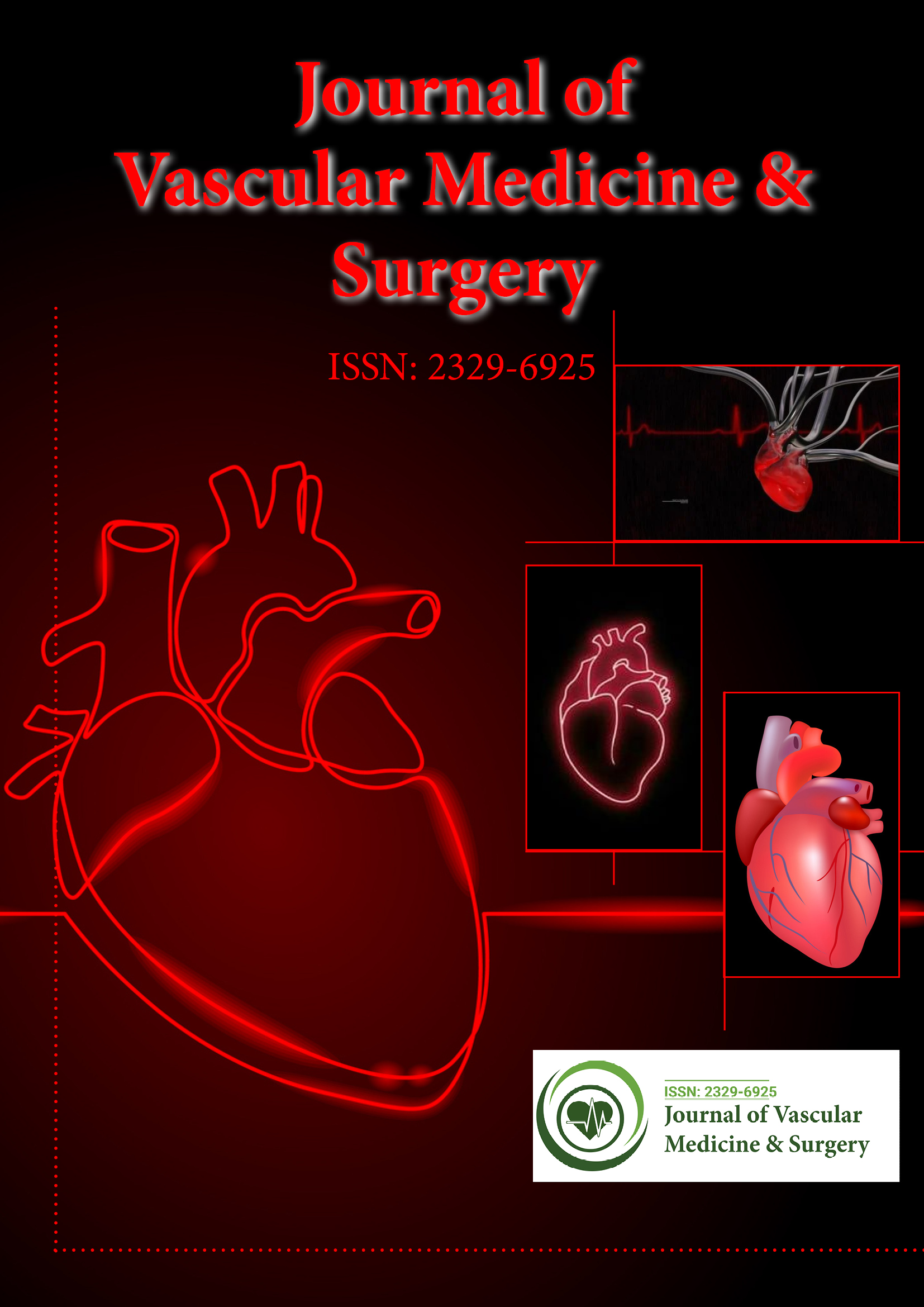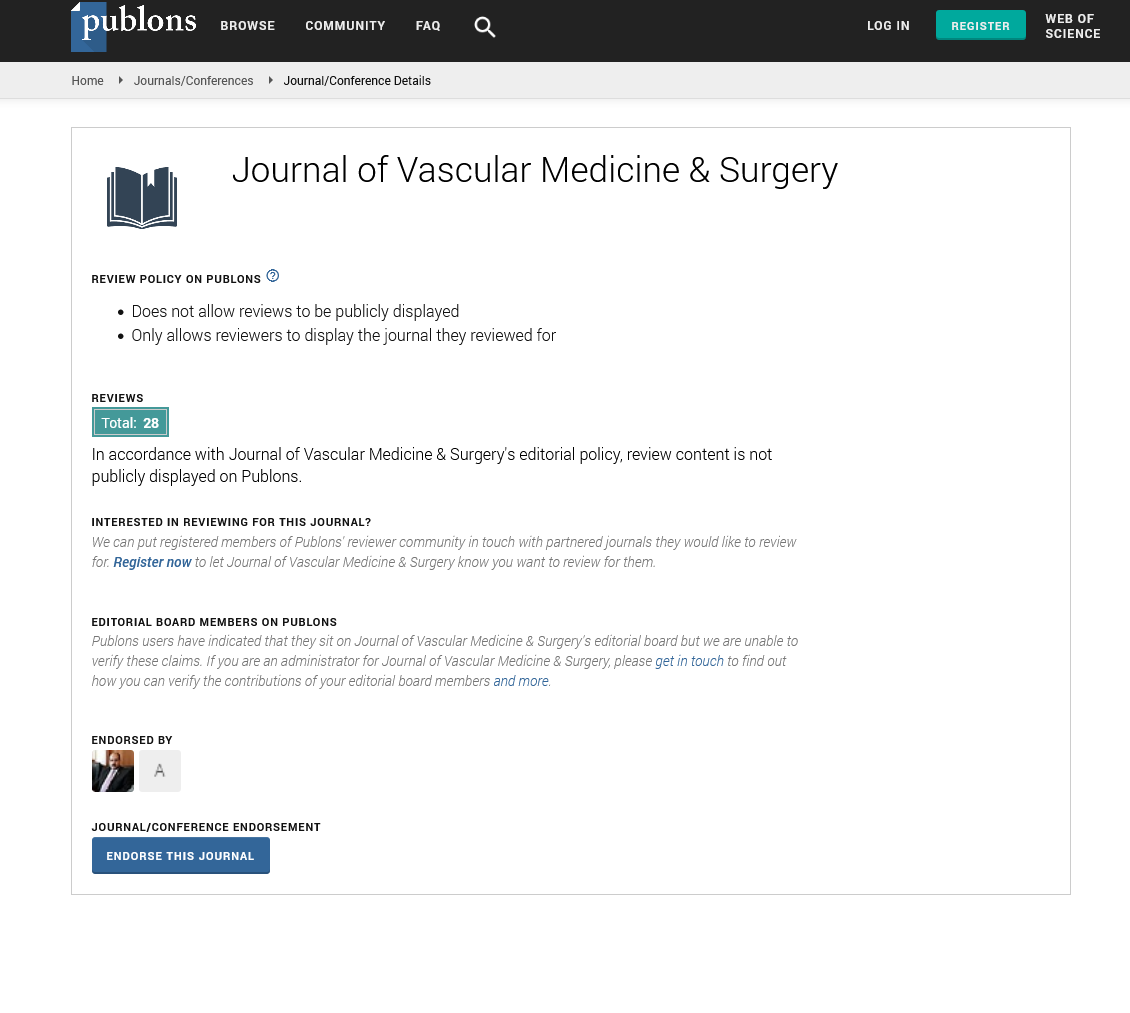Indexed In
- Open J Gate
- Academic Keys
- RefSeek
- Hamdard University
- EBSCO A-Z
- OCLC- WorldCat
- Publons
- Euro Pub
- Google Scholar
- SHERPA ROMEO
Useful Links
Share This Page
Journal Flyer

Open Access Journals
- Agri and Aquaculture
- Biochemistry
- Bioinformatics & Systems Biology
- Business & Management
- Chemistry
- Clinical Sciences
- Engineering
- Food & Nutrition
- General Science
- Genetics & Molecular Biology
- Immunology & Microbiology
- Medical Sciences
- Neuroscience & Psychology
- Nursing & Health Care
- Pharmaceutical Sciences
Short Communication - (2025) Volume 13, Issue 5
A Hidden Connection: Aortic Stenosis and Retinal Vascular Disease
Huan Seong*Received: 18-Apr-2025, Manuscript No. JVMS-25-29211; Editor assigned: 21-Apr-2025, Pre QC No. JVMS-25-29211 (PQ); Reviewed: 05-May-2025, QC No. JVMS-25-29211; Revised: 12-May-2025, Manuscript No. JVMS-25-29211 (R); Published: 19-May-2025, DOI: 10.35248/2329-6925.25.13.600
Description
Aortic Stenosis (AS), once considered the domain of cardiology alone, is now recognized for its far-reaching effects across various organ systems. Its rising incidence, particularly among aging populations, has transformed AS into a growing public health challenge. Simultaneously, Retinal Vascular Occlusive Diseases (RVODs) notably Retinal Artery Occlusion (RAO) and Retinal Vein Occlusion (RVO) are being reframed as not only ophthalmologic emergencies but also markers of systemic vascular pathology. A recent nationwide study from South Korea has highlighted a strong clinical correlation between AS and RVOD, suggesting a common vascular pathophysiology and calling for a more integrated approach to patient care.
Aortic stenosis is characterized by the narrowing of the aortic valve opening, leading to obstructed blood flow from the left ventricle to the systemic circulation. Historically attributed to calcific degeneration, contemporary insights point to a more nuanced pathogenesis involving valvular fibrosis, chronic inflammation, endothelial dysfunction and atherosclerosis. Interestingly, these mechanisms also underlie the development of retinal vascular disease, suggesting overlapping etiologic pathways [1,3].
RVOD comprises RAO and RVO. RAO is typically embolic in nature, with emboli often originating from atherosclerotic plaques or structural heart abnormalities, such as those seen in AS. RVO, on the other hand, is commonly associated with hypertension, diabetes and hyperlipidemia. Both RAO and RVO can lead to irreversible visual impairment and may serve as early clinical indicators of systemic vascular compromise [4,7].
Shared vascular risk and the role of valve intervention
In a study involving over 8,000 patients, researchers conducted a longitudinal analysis comparing individuals newly diagnosed with AS against age- and sex-matched controls. The 10-year follow-up revealed that patients with AS had a significantly higher incidence of RVOD, even after adjusting for cardiovascular risk factors such as atrial fibrillation, myocardial infarction and diabetes mellitus. This robust finding underscores the systemic vascular implications of valvular disease. Of particular interest was the subgroup analysis involving patients who underwent Aortic Valve Replacement (AVR). Among AS patients, those who received AVR had a different risk profile for developing RVOD compared to those who did not undergo the procedure. This observation supports the hypothesis that timely AVR may have protective effects beyond hemodynamic correction, potentially reducing the risk of downstream microvascular complications, including retinal vascular disease.
This study emphasizes the need for clinicians to break free from siloed thinking. Cardiologists, ophthalmologists and primary care providers often operate independently, yet conditions like AS and RVOD are pathophysiologically linked. Retinal vascular events may serve as early warning signs of undiagnosed valvular disease, just as the diagnosis of AS should prompt an evaluation of retinal vascular health especially in elderly patients or those presenting with unexplained visual symptoms [8,10].
Implications for clinical practice and future research
This emerging evidence has several clinical and systemic implications. First, it argues for routine cross-specialty screening in high-risk individuals. Patients newly diagnosed with AS could benefit from retinal evaluations, while those with idiopathic RAO or RVO might warrant a cardiovascular work-up, including echocardiography. Second, the findings support a multidisciplinary care model with improved coordination between cardiology, ophthalmology and general medicine. Integrated electronic health records and shared clinical pathways could facilitate this collaboration.
The study also raises important questions for further investigation. Are the specific inflammatory markers, oxidative stress mediators, or endothelial biomarkers that bridge AS and RVOD usable as predictive tools for clinical outcome or for stratifying patient risk? Furthermore, the potential role of pharmacologic agents such as statins, antiplatelet therapies, or anti-inflammatory drugs in reducing both valvular and retinal vascular events remains an important area for prospective research.
From a preventive care perspective, lifestyle interventions that address systemic inflammation, control hypertension and optimize lipid profiles may have dual benefits—slowing the progression of AS while lowering the risk of retinal vascular occlusions. As medicine increasingly embraces personalized care, understanding these shared mechanisms will be crucial for developing effective, individualized treatment strategies.
Conclusion
The connection between aortic stenosis and retinal vascular occlusive disease is more than coincidental it reflects a shared vulnerability within the vascular system. This association calls for a holistic view of cardiovascular and ocular health, supported by interdisciplinary collaboration and patient-centered care. The recent South Korean study offers compelling evidence that the retina can serve as a window into systemic vascular disease and that timely cardiovascular interventions may mitigate risks beyond the heart.
References
- Tarantini G, Cardaioli F. TAVI and PCI: Redefining treatment for aortic stenosis and complex coronary artery disease. Lancet. 2024;404(10471):2492-2493.
[CrossRef] [GoogleScholar] [PubMed]
- Ebrahimi S. Early aortic valve replacement in asymptomatic severe aortic stenosis: A turning point in management. Int J Cardiol. 2025;435:133411.
[CrossRef] [GoogleScholar] [PubMed]
- Kim M, Choi EY, Bae K, Lee JY. Risk of Retinal Vascular Occlusive Disease in Patients with Aortic Stenosis: A Nationwide Korean Cohort Study. Ophthalmol Sci. 2025;5(5):100795.
[CrossRef] [GoogleScholar] [PubMed]
- Ciofani JL, Han D, Woolf B, Gill D, Allahwala UK, Bhindi R. Angiotensin-converting enzyme inhibitors for aortic stenosis: A drugtarget Mendelian randomization study. Int J Cardiol Heart Vasc. 2025;59:101729.
[CrossRef] [GoogleScholar] [PubMed]
- Pergola V, Cozac DA, Savo MT, Mushtaq S, Motta R, Pedrinelli R, et al. Prognostic significance of severe mitral annular calcification in aortic stenosis: Implications for aortic valve replacement outcome. Int J Cardiol Heart Vasc. 2025;59:101720.
[CrossRef] [GoogleScholar] [PubMed]
Citation: Seong H (2025). A Hidden Connection: Aortic Stenosis and Retinal Vascular Disease. J Vasc Surg. 13: 600
Copyright: © 2025 Seong H. This is an open-access article distributed under the terms of the Creative Commons Attribution License, which permits unrestricted use, distribution and reproduction in any medium, provided the original author and source are credited.

